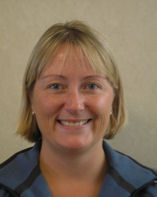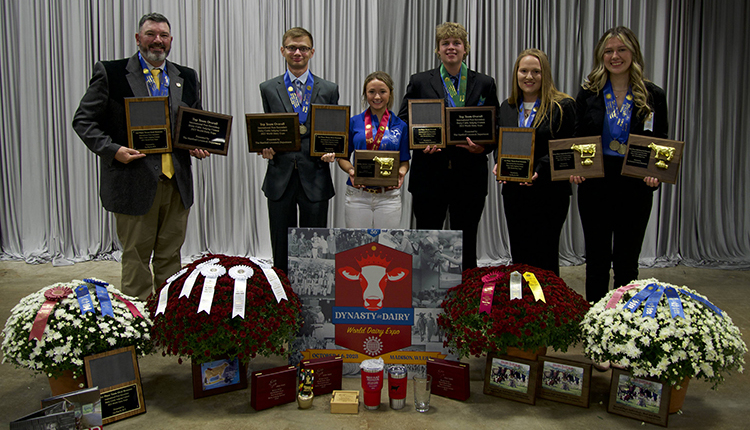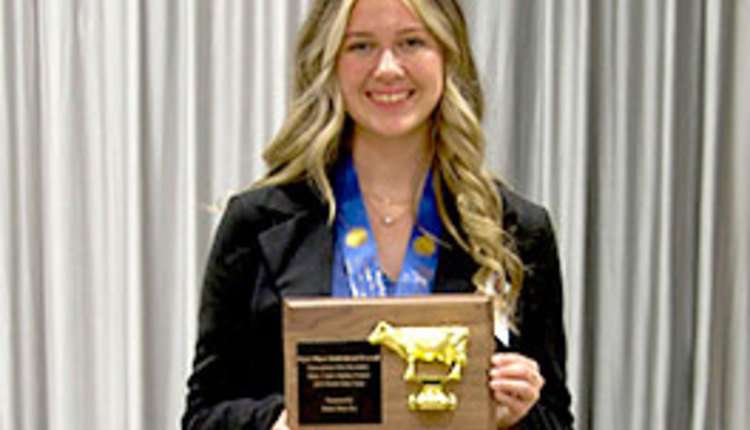by Amanda Smith, Hoard's Dairyman Associate Editor
Earlier this week, we addressed Ryan Gosling's letter to NMPF (National Milk Producers Federation) in regards to the practice of dehorning. While dehorning has become commonplace on dairies to foster the safety of both cattle and employees, the practice has evolved throughout our industry's history.
 It is now recommended by the American Veterinary Medical Association that local anesthetics and nonsteroidal anti-inflammatory drugs (NSAIDs) be used to relieve postoperative pain from dehorning procedures. This topic was tackled by researchers from Texas Tech led by M. Sutherland in recent work published in the February Journal of Animal Science.
It is now recommended by the American Veterinary Medical Association that local anesthetics and nonsteroidal anti-inflammatory drugs (NSAIDs) be used to relieve postoperative pain from dehorning procedures. This topic was tackled by researchers from Texas Tech led by M. Sutherland in recent work published in the February Journal of Animal Science.
Working with 80 Holstein calves, researchers set out to determine the effect of castration, dehorning or both on the physiology and behavior of 3-month-old calves. The second goal of their work was to evaluate the effectiveness of pain relief to alleviate the pain caused by castration and/or dehorning.
There were eight treatments overall with 10 calves assigned to each:
Calves that were dehorned spend more time head shaking and ear flicking, while castrated calves spent additional time ear flicking and foot stamping when compared to control calves.
Those that were castrated, dehorned or both also spent less time eating compared to the calves that did not under go treatment.
Giving calves pain relief before any procedure boosted the time they spent eating compared to those in treatments 2, 3 or 4.
Castration, dehorning or both also elevated cortisol concentrations for at least four hours after the procedures were performed. However, administering pain relief markedly reduced this response.
The researchers concluded that providing pain relief in the form of a local anesthetic and an NSAID could markedly reduce both the behavioral and physiological response to these procedures.
Earlier this week, we addressed Ryan Gosling's letter to NMPF (National Milk Producers Federation) in regards to the practice of dehorning. While dehorning has become commonplace on dairies to foster the safety of both cattle and employees, the practice has evolved throughout our industry's history.
 It is now recommended by the American Veterinary Medical Association that local anesthetics and nonsteroidal anti-inflammatory drugs (NSAIDs) be used to relieve postoperative pain from dehorning procedures. This topic was tackled by researchers from Texas Tech led by M. Sutherland in recent work published in the February Journal of Animal Science.
It is now recommended by the American Veterinary Medical Association that local anesthetics and nonsteroidal anti-inflammatory drugs (NSAIDs) be used to relieve postoperative pain from dehorning procedures. This topic was tackled by researchers from Texas Tech led by M. Sutherland in recent work published in the February Journal of Animal Science. Working with 80 Holstein calves, researchers set out to determine the effect of castration, dehorning or both on the physiology and behavior of 3-month-old calves. The second goal of their work was to evaluate the effectiveness of pain relief to alleviate the pain caused by castration and/or dehorning.
There were eight treatments overall with 10 calves assigned to each:
- Control handling
- Surgical castration
- Dehorning
- Castration and dehorning
- Control handling plus pain relief
- Castration with pain relief
- Dehorning plus pain relief
- Castration and dehorning plus pain relief
Calves that were dehorned spend more time head shaking and ear flicking, while castrated calves spent additional time ear flicking and foot stamping when compared to control calves.
Those that were castrated, dehorned or both also spent less time eating compared to the calves that did not under go treatment.
Giving calves pain relief before any procedure boosted the time they spent eating compared to those in treatments 2, 3 or 4.
Castration, dehorning or both also elevated cortisol concentrations for at least four hours after the procedures were performed. However, administering pain relief markedly reduced this response.
The researchers concluded that providing pain relief in the form of a local anesthetic and an NSAID could markedly reduce both the behavioral and physiological response to these procedures.








